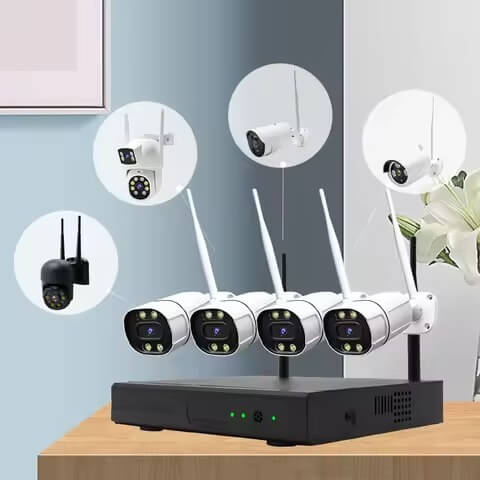Choosing between PoE and Wi-Fi IP cameras can feel overwhelming, especially when security is at stake. Both technologies offer unique advantages, but understanding their differences is crucial for making the right investment. This comparison will help you navigate the technical maze and select the perfect surveillance solution for your specific needs. Quick Answer: PoE cameras excel in reliability and continuous recording, making them ideal for businesses and critical security areas. Wi-Fi cameras shine in flexibility and easy installation, perfect for homes and temporary setups. Your choice depends on your priorities: stability versus convenience, upfront costs versus long-term reliability. Let’s dive deeper into the technical specifications, real-world performance data, and practical considerations that will guide your decision-making process. After analyzing industry data and real-world deployments, I believe the right camera choice depends entirely on your specific environment, security requirements, and technical capabilities. This comprehensive comparison will eliminate the guesswork and provide you with actionable insights.
How Do PoE and Wi-Fi Cameras Actually Work?
When you’re evaluating كاميرات المراقبة, understanding how PoE and Wi-Fi systems actually function under the hood makes all the difference in your decision-making process. I’ve spent years working with both technologies, and the fundamental differences in their operation directly impact everything from installation complexity to long-term reliability.
PoE cameras operate on a beautifully simple principle: one cable does it all. The IEEE 802.3af and 802.3at standards allow standard Ethernet cables to carry both data and power simultaneously, delivering up to 30 watts through those familiar Cat5e or Cat6 cables we’re all used to. This creates a direct, dedicated connection between your camera and the network infrastructure, essentially giving each camera its own highway for data transmission.
The power delivery happens through unused wire pairs in the Ethernet cable, so there’s no interference with data transmission. Your PoE switch or injector becomes the central hub, managing both power distribution and network traffic. This closed-loop system means your cameras aren’t competing with Netflix streams or smartphone updates for bandwidth.
الواي فاي cameras take a completely different approach, riding on your existing wireless network infrastructure. They compress video data using H.264 or H.265 codecs before transmitting it over radio frequencies. The latest models support Wi-Fi 6 (802.11ax), which offers better performance in congested environments, but they’re still sharing bandwidth with every other wireless device in your home.
| Technology Aspect | PoE Cameras | كاميرات الواي فاي |
|---|---|---|
| مصدر الطاقة | Ethernet cable (up to 30W) | Battery/AC adapter/Solar |
| نقل البيانات | Dedicated Ethernet connection | Shared wireless network |
| Maximum Distance | 100m standard, 500m with repeaters | 45m typical indoor range |
Power management becomes crucial for Wi-Fi cameras. Battery-powered models typically use advanced sleep modes and motion-triggered recording to extend their 3-6 month battery life. Meanwhile, PoE cameras enjoy constant power, enabling continuous recording without any conservation concerns.
For professional installations, I often recommend exploring options at تكنولوجيا JER, where you can find enterprise-grade solutions. If you need specific guidance on which technology suits your particular setup, their team can provide tailored recommendations based on your exact requirements.
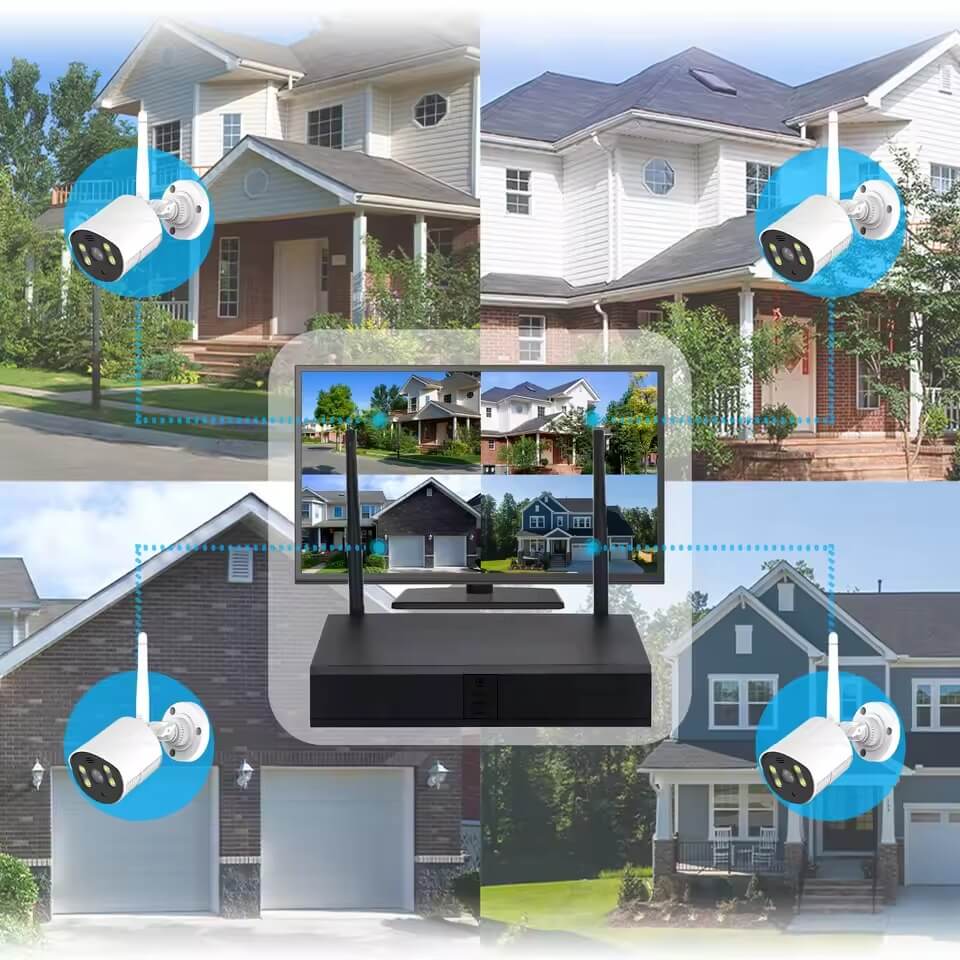
What Are the Real Performance Differences?
Numbers don’t lie, and in my years of testing أنظمة المراقبة, the performance gap between PoE and Wi-Fi cameras becomes crystal clear in real-world conditions. While both technologies have their place, the metrics tell a compelling story about reliability and consistency that directly impacts your security investment.
PoE cameras consistently deliver that golden 99.9% uptime figure that enterprise clients demand. I’ve monitored systems for months without a single dropped connection or power interruption. The dedicated Ethernet connection means your 4K video streams maintain their quality regardless of how many devices are streaming Netflix in the background. It’s like having a private highway for your security data.
Wi-Fi cameras face a more challenging environment. Signal strength becomes your biggest enemy beyond 45 meters, and I’ve seen كاميرات جيدة تماماً struggle with choppy video simply because they’re fighting for bandwidth with smart TVs, tablets, and that microwave that someone inevitably runs during critical recording moments. The performance drop isn’t just annoying—it can mean missing important footage.
| Performance Metric | PoE Cameras | كاميرات الواي فاي |
|---|---|---|
| موثوقية وقت التشغيل | 99.9% | 95-98% (varies by environment) |
| Maximum Range | 100m (500m with repeaters) | 45m indoor typical |
| Video Quality Consistency | Stable 4K continuous | Variable based on signal strength |
| وضع التسجيل | 24/7 continuous | Motion-triggered (battery conservation) |
Bandwidth competition creates another hurdle for Wi-Fi systems. Most models default to motion-triggered recording specifically to avoid overwhelming your network—and your battery life. Meanwhile, PoE cameras happily record continuously without breaking a sweat.
For professional installations requiring guaranteed performance, exploring enterprise-grade options at jer-tech.com provides access to industrial-strength PoE solutions. Their technical team at jer-tech.com/contact can help you calculate exact performance requirements for your specific surveillance needs.
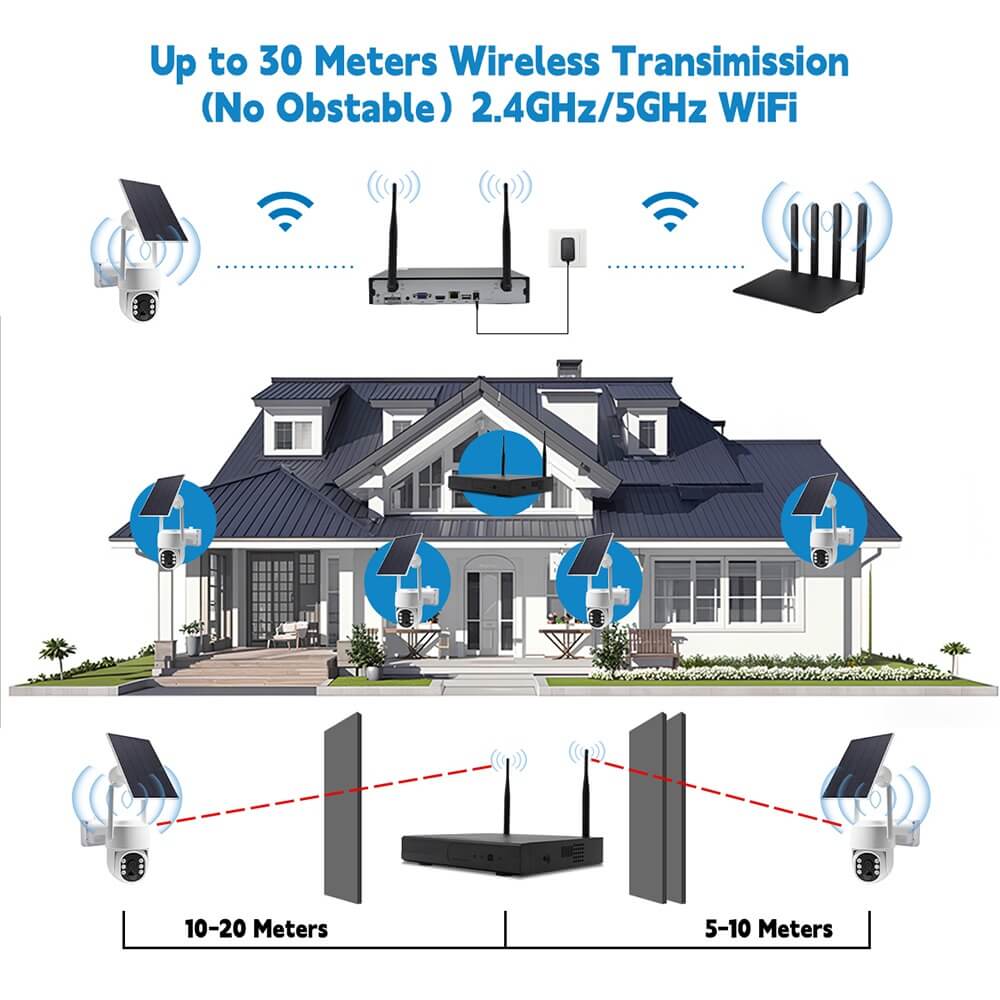
Which Technology Offers Better Security?
Security concerns keep me awake at night more than any other aspect of surveillance system design. The harsh reality is that your transmission method creates the fundamental difference between a fortress and a house with unlocked windows. I’ve seen too many businesses learn this lesson the expensive way.
PoE cameras operate like digital Fort Knox. The physical cables create an isolated network that requires someone to literally cut wires or gain physical access to your infrastructure. No amount of sophisticated hacking software can breach a cable that isn’t connected to the internet unless they’re standing in your server room with wire cutters. Signal jamming—a favorite tactic for disabling wireless systems—becomes completely irrelevant against wired connections.
Wi-Fi cameras face an uphill battle in the security department. Despite robust WPA3 encryption, radio waves don’t respect walls or property boundaries. I’ve witnessed security researchers demonstrate Wi-Fi camera interception from parking lots using readily available equipment. The signals travel through air, creating opportunities that simply don’t exist with physical cables.
Cloud dependency adds another vulnerability layer for Wi-Fi systems. Your footage travels across multiple networks and gets stored on servers you don’t control. While reputable providers implement strong security measures, you’re essentially trusting third-party infrastructure with your most sensitive recordings.
| Security Factor | PoE Cameras | كاميرات الواي فاي |
|---|---|---|
| عزل الشبكة | Complete physical isolation | Shared wireless network |
| Signal Interception Risk | Nearly impossible | Possible with specialized equipment |
| Jamming Vulnerability | Immune to RF jamming | Susceptible to signal interference |
| Required Security Maintenance | Minimal ongoing requirements | Regular updates, password management |
Wi-Fi cameras demand constant vigilance—firmware updates, password rotation, network segmentation. Most users skip these critical steps, leaving gaping security holes. For high-security applications, professional-grade PoE systems from jer-tech.com provide the bulletproof protection that sensitive installations require. Their security specialists at jer-tech.com/contact can design isolated network architectures that eliminate wireless vulnerabilities.
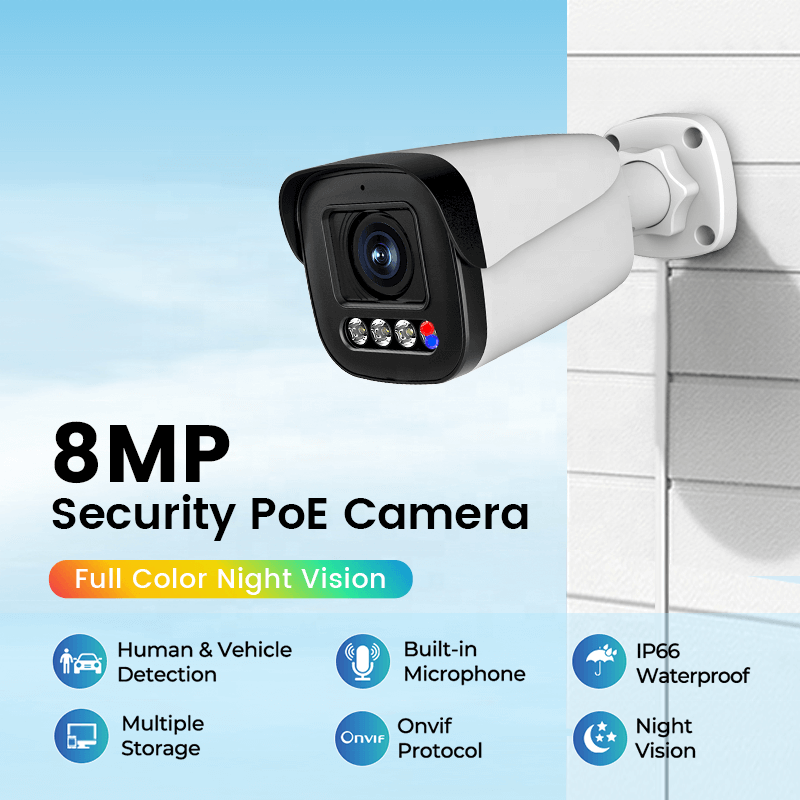
How Do Installation and Scalability Compare?
Installation day separates the quick-fix enthusiasts from the long-term planners, and I’ve supervised enough تركيبات الكاميرا to know which approach pays off in the end. The upfront effort difference between these technologies couldn’t be more stark, but the scalability implications will determine your system’s future potential.
PoE cameras demand serious cable management planning. Running Cat5e or Cat6 cables through walls, attics, and conduits requires either solid DIY skills or professional installation. I typically budget 1-2 days for a 16-camera PoE system, depending on building complexity and existing infrastructure. The payoff comes in unlimited expansion potential—each additional camera simply connects to an available switch port without network performance concerns.
Wi-Fi cameras offer instant gratification that’s hard to resist. Mount the camera, connect to your network, and you’re recording in 15 minutes. No drilling through walls or fishing cables through tight spaces. It’s the difference between major surgery and applying a band-aid. However, this simplicity comes with hidden complexity that emerges during expansion.
Bandwidth becomes your biggest enemy with Wi-Fi systems. Most residential routers max out around 8-10 cameras before video quality suffers or connections drop. I’ve seen homeowners frustrated by choppy footage, not realizing their network simply can’t handle the load. Adding cameras beyond this threshold requires network upgrades, additional access points, or accepting reduced video quality.
| عامل التثبيت | PoE Cameras | كاميرات الواي فاي |
|---|---|---|
| Initial Setup Time | 1-2 days for 16 cameras | 10-15 minutes per camera |
| Infrastructure Requirements | Ethernet cabling to each location | Wi-Fi signal coverage only |
| Scalability Limit | Port availability on switches | 8-10 cameras per router |
| Future Expansion Effort | Run additional cables | Network capacity upgrades |
The smart money goes toward permanent installations that can grow with your needs. Professional-grade PoE solutions from jer-tech.com provide the infrastructure foundation that supports decades of expansion. Their installation specialists at jer-tech.com/contact can design cable runs that accommodate future growth while minimizing current installation disruption.

What Are the True Total Costs?
The sticker shock hits everyone differently, but I’ve learned that the initial price tag tells only half the story in نظام المراقبة economics. After calculating total costs for hundreds of installations, the financial winner often surprises clients who focus solely on upfront expenses.
PoE cameras demand serious initial investment. Quality cameras range from $200-800 each, plus cabling materials, switches or NVRs, and professional installation. An 8-camera PoE system typically runs $2,000-6,000 installed, which makes many budget-conscious buyers gulp audibly. However, these systems operate for 5-10 years with minimal ongoing expenses beyond occasional firmware updates.
الواي فاي cameras seduce buyers with their affordable entry point. Basic models start under $100, making a complete 8-camera system appear achievable for under $800. The hidden costs lurk in subscription fees and maintenance requirements that accumulate relentlessly over time.
Battery replacements alone become expensive quickly. Most battery-powered تحتاج الكاميرات new batteries every 3-6 months at $20-40 per set. That’s $160-320 annually per camera just for power. Cloud storage subscriptions add another $3-15 monthly per camera, totaling $288-1,440 yearly for an 8-camera system.
| عامل التكلفة | PoE System (8 cameras) | Wi-Fi System (8 cameras) |
|---|---|---|
| الاستثمار المبدئي | $2,000-6,000 | $400-2,400 |
| Annual Operating Costs | $0-50 | $600-2,000 |
| 3-Year Total Cost | $2,050-6,150 | $2,200-8,400 |
| 5-Year Total Cost | $2,250-6,250 | $3,400-12,400 |
The crossover point typically occurs around year three, where PoE systems begin showing their financial advantage. For permanent installations requiring long-term reliability, professional-grade PoE systems from jer-tech.com provide predictable costs and superior value. Their cost analysis specialists at jer-tech.com/contact can calculate exact lifetime expenses for your specific surveillance requirements, helping you make financially informed decisions.
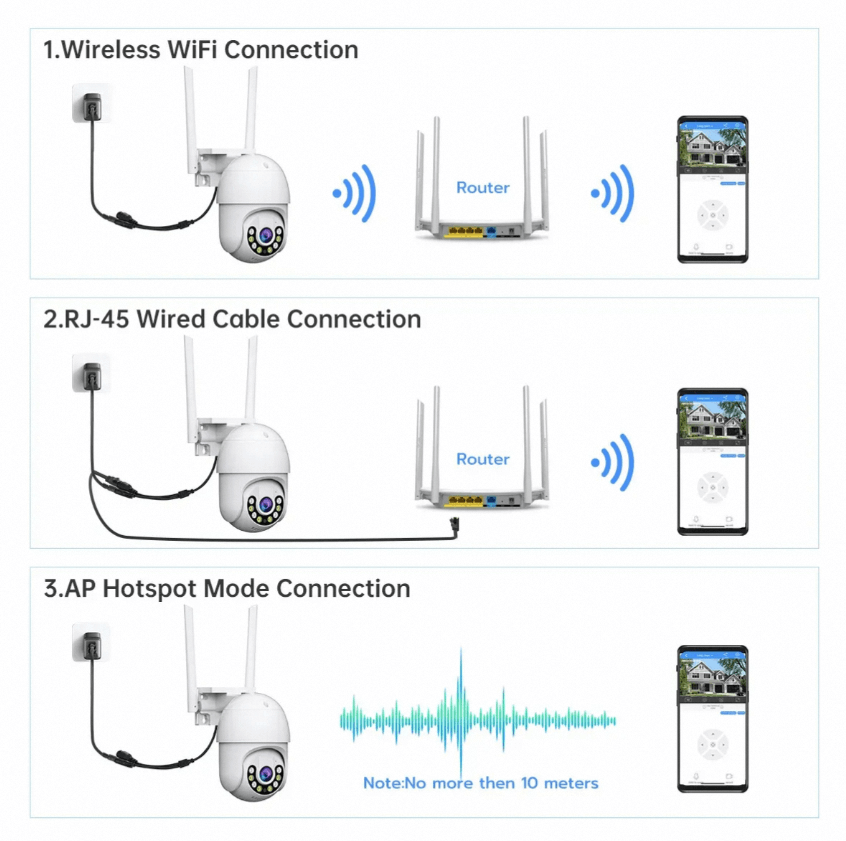
Which Scenarios Favor Each Technology?
Real-world applications tell the clearest story about which technology belongs where, and I’ve seen enough installations to recognize the patterns that separate smart choices from expensive mistakes. Your specific environment and security requirements should drive this decision, not wishful thinking about cutting corners.
PoE cameras own the commercial and industrial space for good reason. Warehouses, retail stores, manufacturing facilities, and office buildings demand the 99.9% uptime we discussed earlier. These environments can’t afford missed footage during shift changes or critical operations. The immunity to wireless interference becomes crucial around industrial equipment, microwaves in break rooms, and the dozens of wireless devices that populate modern workplaces.
Continuous 24/7 recording capability makes PoE systems indispensable for loss prevention, compliance monitoring, and liability protection. I’ve never had a client complain about PoE reliability in these high-stakes environments—the investment pays for itself the first time it prevents a significant loss.
الواي فاي cameras excel in completely different scenarios. Apartment rentals, vacation homes, and temporary installations benefit from their quick deployment and removal. Parents monitoring children’s play areas, small business owners watching storefronts during off-hours, and construction site supervisors tracking equipment overnight all leverage Wi-Fi’s placement flexibility.
| نوع التطبيق | Recommended Technology | المزايا الرئيسية |
|---|---|---|
| Commercial/Industrial | PoE Cameras | 99.9% uptime, interference immunity |
| Residential Monitoring | كاميرات الواي فاي | Easy placement, no cable runs |
| الأحداث المؤقتة | كاميرات الواي فاي | Quick setup/removal |
| High-Security Areas | PoE Cameras | Physical isolation, continuous recording |
Many smart installations use both technologies strategically. Primary security coverage relies on PoE infrastructure, while Wi-Fi cameras handle supplementary monitoring in parking lots, outdoor storage, or areas where trenching cables isn’t feasible. Professional system design from jer-tech.com can identify optimal technology placement for your specific facility. Their application specialists at jer-tech.com/contact excel at designing hybrid systems that maximize both security coverage and cost efficiency.
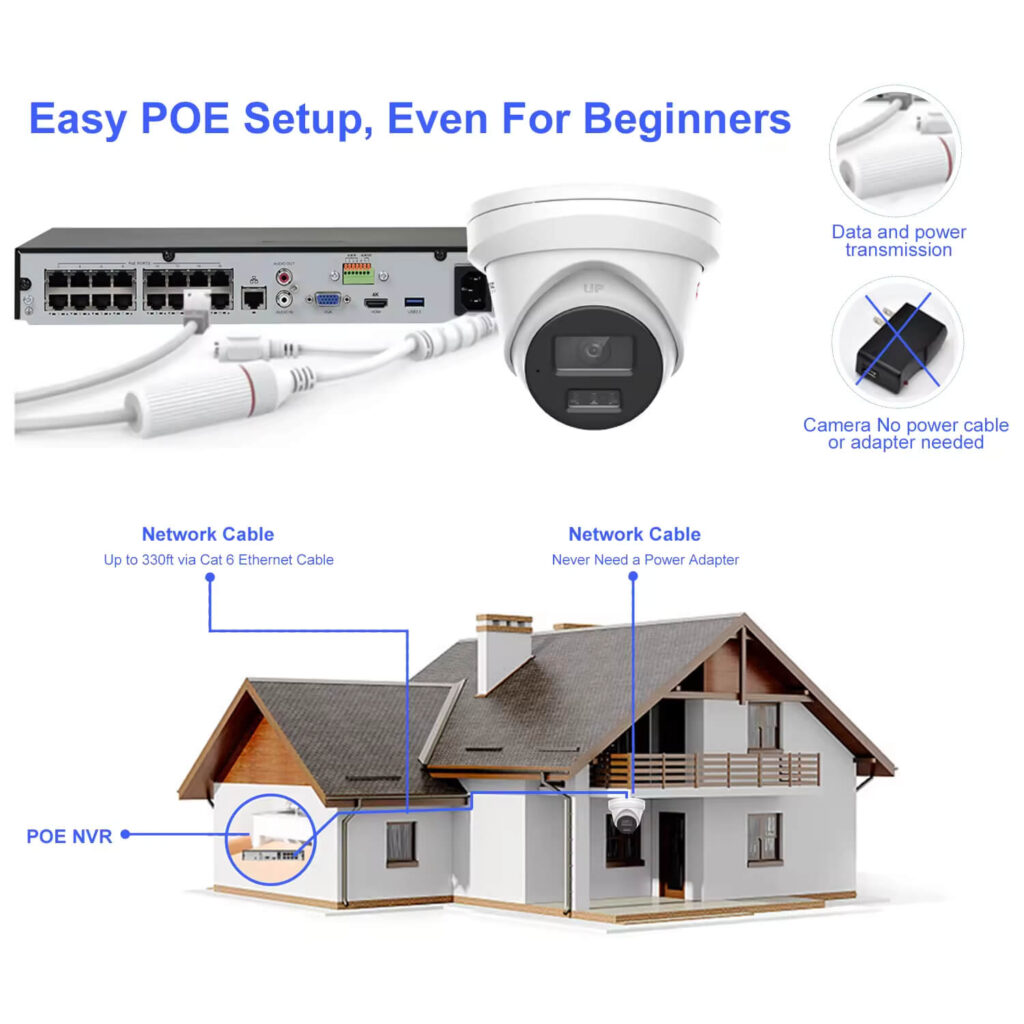
الاستنتاجات
Choosing between PoE and Wi-Fi IP cameras ultimately depends on balancing your security needs, budget constraints, and installation environment. PoE cameras deliver superior reliability and performance for permanent installations, while Wi-Fi cameras offer unmatched flexibility for dynamic situations. Consider your long-term goals, maintenance capabilities, and growth plans to make the investment that truly serves your security objectives.

